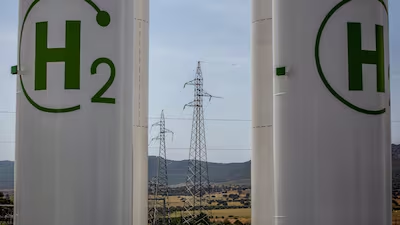
Hydrogen storage tanks at Iberdola's Puertollano green hydrogen plant in Spain. Bloomberg
Hydrogen storage tanks at Iberdola's Puertollano green hydrogen plant in Spain. Bloomberg
How Cop28 is setting the stage for the global hydrogen trade
The UAE will help other nations in exporting hydrogen, primarily green hydrogen, Energy Minister says
